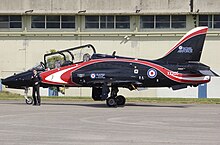
Avro was a British aircraft manufacturer. Its designs include the Avro 504, used as a trainer in the First World War, the Avro Lancaster, one of the pre-eminent bombers of the Second World War, and the delta wing Avro Vulcan, a stalwart of the Cold War.
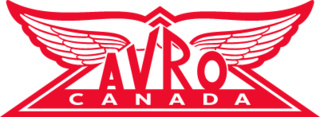
Avro Canada was a Canadian aircraft manufacturing company. It was founded in 1945 as an aircraft plant and within 13 years became the third-largest company in Canada, one of the largest 100 companies in the world, and directly employing over 50,000. Avro Canada was best known for the CF-105 Arrow, but through growth and acquisition, it rapidly became a major, integrated company that had diverse holdings.

The de Havilland Aircraft Company Limited was a British aviation manufacturer established in late 1920 by Geoffrey de Havilland at Stag Lane Aerodrome Edgware on the outskirts of north London. Operations were later moved to Hatfield in Hertfordshire.

The Hawker Siddeley HS 748 is a medium-sized turboprop airliner originally designed and initially produced by the British aircraft manufacturer Avro. It was the last aircraft to be developed by Avro prior to its absorption into Hawker Siddeley.

The British Aerospace 125 is a twinjet mid-size business jet. Originally developed by de Havilland and initially designated as the DH.125 Jet Dragon, it entered production as the Hawker Siddeley HS.125, which was the designation used until 1977. Later on, more recent variants of the type were marketed as the Hawker 800.
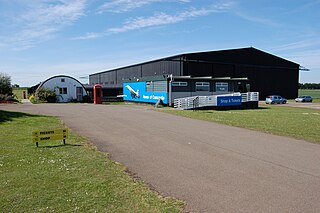
The National Museum of Flight is Scotland's national aviation museum, at East Fortune Airfield, just south of the village of East Fortune, Scotland. It is one of the museums within National Museums Scotland. The museum is housed in the original wartime buildings of RAF East Fortune which is a well preserved World War II airfield. As a result of this the entire site is a scheduled monument with no permanent structures added by the museum. The hangars, control tower and stores were designated as Category B listed buildings by Historic Scotland, but this designation was removed in 2013 as they were already covered by the stricter scheduling.
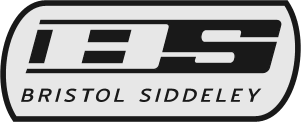
Bristol Siddeley Engines Ltd (BSEL) was a British aero engine manufacturer. The company was formed in 1959 by a merger of Bristol Aero-Engines Limited and Armstrong Siddeley Motors Limited. In 1961 the company was expanded by the purchase of the de Havilland Engine Company and the engine division of Blackburn Aircraft. Bristol Siddeley was purchased by Rolls-Royce Limited in 1966.
Sir W. G. Armstrong Whitworth Aircraft Company, or Armstrong Whitworth Aircraft, was a British aircraft manufacturer.

The Hawker Siddeley HS 780 Andover is a twin-engined turboprop military transport aircraft produced by Hawker Siddeley for the Royal Air Force (RAF), developed from the Avro-designed HS 748 airliner. The Andover was named after the Avro Andover, a biplane transport used by the RAF for medical evacuation between the first and second world wars; and RAF Andover, where some of its trials were carried out. The Andover had a kneeling landing gear to make ramp loading easier.

Newark Air Museum is an air museum located on a former Royal Air Force station at Winthorpe, near Newark-on-Trent in Nottinghamshire, England. The museum contains a variety of aircraft.

The Midland Air Museum (MAM) is situated just outside the village of Baginton in Warwickshire, England, and is adjacent to Coventry Airport. The museum includes the Sir Frank Whittle Jet Heritage Centre, where many exhibits are on display in a large hangar. It also has a small hangar, and a fenced-off green area where many aircraft are on display in the open.

John Carver Meadows Frost was a British aircraft designer. His primary contributions centred on pioneering supersonic British experimental aircraft and as the chief designer who shepherded Canada's first jet fighter project, the Avro Canada CF-100, to completion. He was also the major force behind the Avro Canada VTOL aircraft projects, particularly as the unheralded creator of the Avro Canada flying saucer projects.
The North East Land, Sea and Air Museums (NELSAM), formerly the North East Aircraft Museum, is a volunteer-run aviation museum situated on the site of the former RAF Usworth/Sunderland Airport, between Washington and Sunderland, in Tyne and Wear, England. The museum has the largest aviation collection between Yorkshire and Scotland and houses over 30 aircraft and a wide collection of aero engines. The museum also has a small collection of other items such as weaponry, vehicles and other historical exhibits.

The Hawker Siddeley HS-121 Trident is a British airliner produced by Hawker Siddeley. In 1957, de Havilland proposed its DH.121 trijet design to a British European Airways (BEA) request. By 1960, de Havilland had been acquired by Hawker Siddeley. The Trident's maiden flight happened on 9 January 1962, and it was introduced on 1 April 1964, two months after its main competitor, the Boeing 727. By the end of the programme in 1978, 117 Tridents had been produced. The Trident was withdrawn from service in 1995.

The aerospace industry of the United Kingdom is the second-largest national aerospace industry in the world and the largest in Europe by turnover, with a global market share of 17% in 2019. In 2020, the industry employed 116,000 people.

The Gatwick Aviation Museum is located in the village of Charlwood, in Surrey, United Kingdom on the boundary of Gatwick Airport.
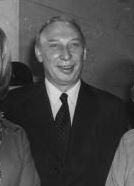
Sir Arnold Alexander Hall was an English aeronautical engineer, scientist and industrialist.
William Patrick Ingram Fillingham was an English test pilot for the de Havilland company. Fillingham flew 120 different types of aircraft during his career including all variants of the de Havilland Mosquito.
Robert Edward Grigg was a British aerospace engineer, and was the chief designer of the highly-successful British Aerospace 146.

